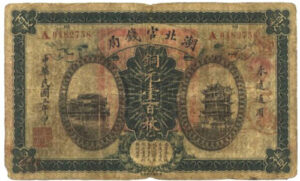Lesson 3: The Birth of Banking and Paper Money

The next major innovation in the history of money was the development of banking and paper currency. Early banking systems date back thousands of years to ancient Mesopotamia, where traders used “tokens” to represent a claim to certain goods or services. These tokens acted as a form of promissory note, a written guarantee that goods or services would be delivered in the future. Over time, these written promises evolved into more complex forms of banking.
In medieval Europe, banking institutions began to take shape in the Italian city-states like Venice and Florence. Early banks were established by wealthy merchants and families who offered services such as safe storage for valuables and loans. These banks also issued “bills of exchange,” which allowed merchants to transfer money across vast distances without the need to physically transport gold or coins. These bills acted as early forms of paper money, representing a claim on gold or silver that could be redeemed later.
One of the most significant developments in the history of banking was the creation of paper money in China during the Tang Dynasty (618–907 CE). China was the first civilization to issue official government-backed paper currency, and by the time of the Song Dynasty (960–1279 CE), paper money had become widespread. The Chinese government initially issued paper money as a way to ease the burden of transporting heavy metal coins across long distances. These paper notes were backed by the government’s reserves of gold and silver, making them a credible form of currency.

The idea of paper money spread to other parts of the world over time. By the 17th century, European countries such as Sweden and England began issuing their own paper currencies. The Bank of England, founded in 1694, became one of the first institutions to issue paper banknotes that were backed by gold. These notes could be exchanged for gold at the bank, and their widespread use revolutionized trade, as they were much easier to carry and transport than heavy metal coins.
As we move forward, the development of paper money would lead to even more innovations in the world of finance. Central banks and governments began to experiment with paper currency as a way to stimulate economies, fund wars, and manage national debts. However, as we will see in later sections, this move away from commodity-backed currencies would have profound consequences, both for individual wealth and for entire nations.
